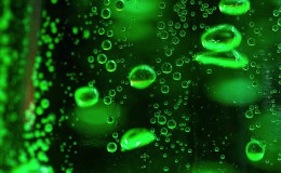Hydrogen Economy
Twenty percent of air is oxygen and also comprises eight ninths of water by mass. When hydrogen and oxygen are used in fuel cells, first invented in 1837 By Sir William Grove, these two elements very efficiently and powerfully create electricity and heat and the only product is water. Likewise, when used as fuels in rockets for outer space they do not significantly pollute the atmosphere. Hydrogen is used in many industries; chemical, pharmaceutical, water, food and transport. And it’s ability to participate in all kinds of reactions remains an open book for future developments.
Hydrogen by kilogram is approximately one hundred and forty two million Joules (142 Megajoules). After transport and storage losses, a modern fuel cell makes about twenty five kilowatt hours of electricity with the remaining heat used in a CHP system with fully condensed water approximating the HHV value. As long as the solar insolation or other renewable energy source is used to produce the Hydrogen, this is considered an inexhaustible supply of energy and a great energy vector.
The hydrogen economy has been waiting in the wings for over two hundred years to provide lighter than air transport, clean shipping fuel and renewable energy generation.
If you require consultancy services or further information please click here.




